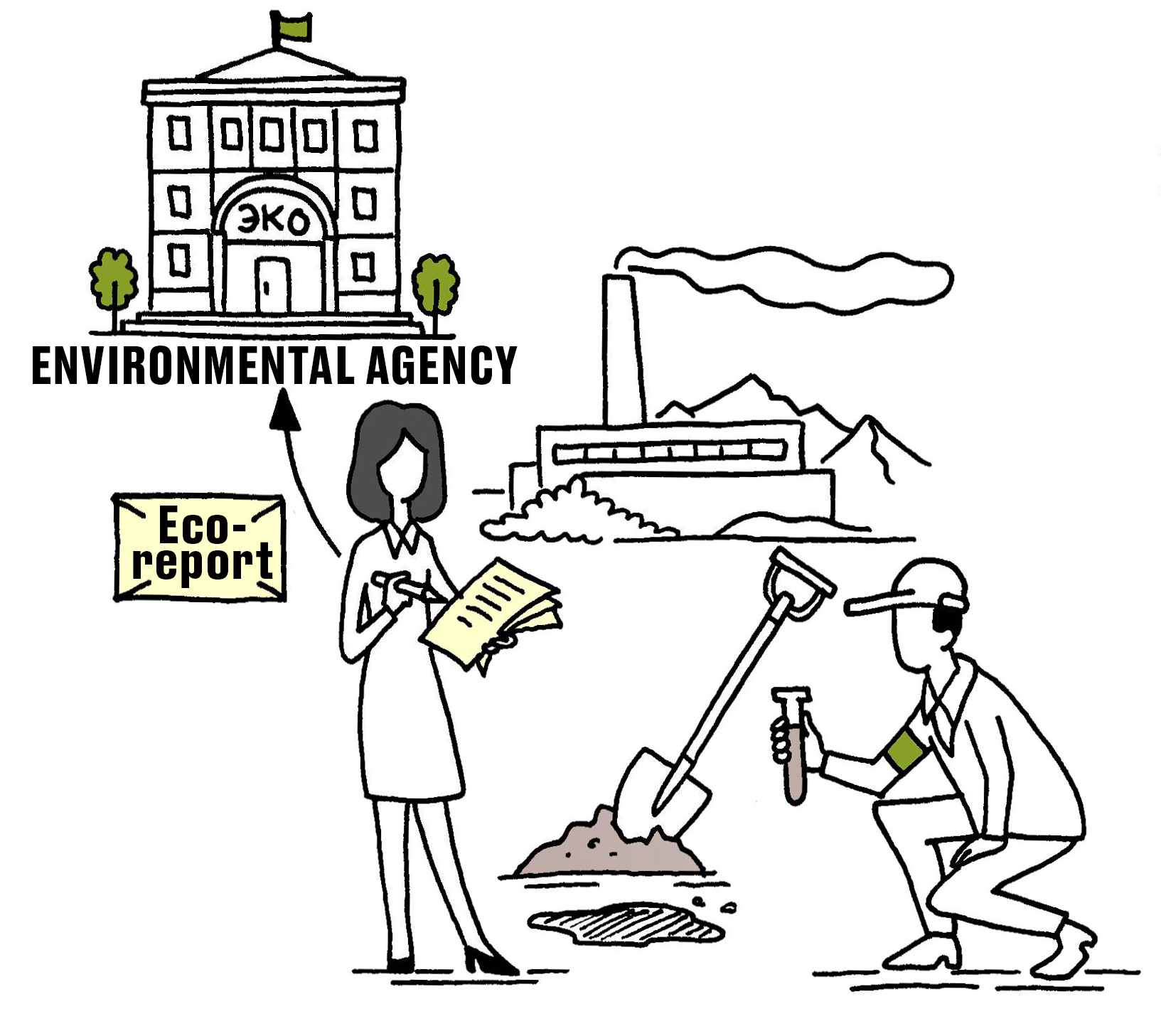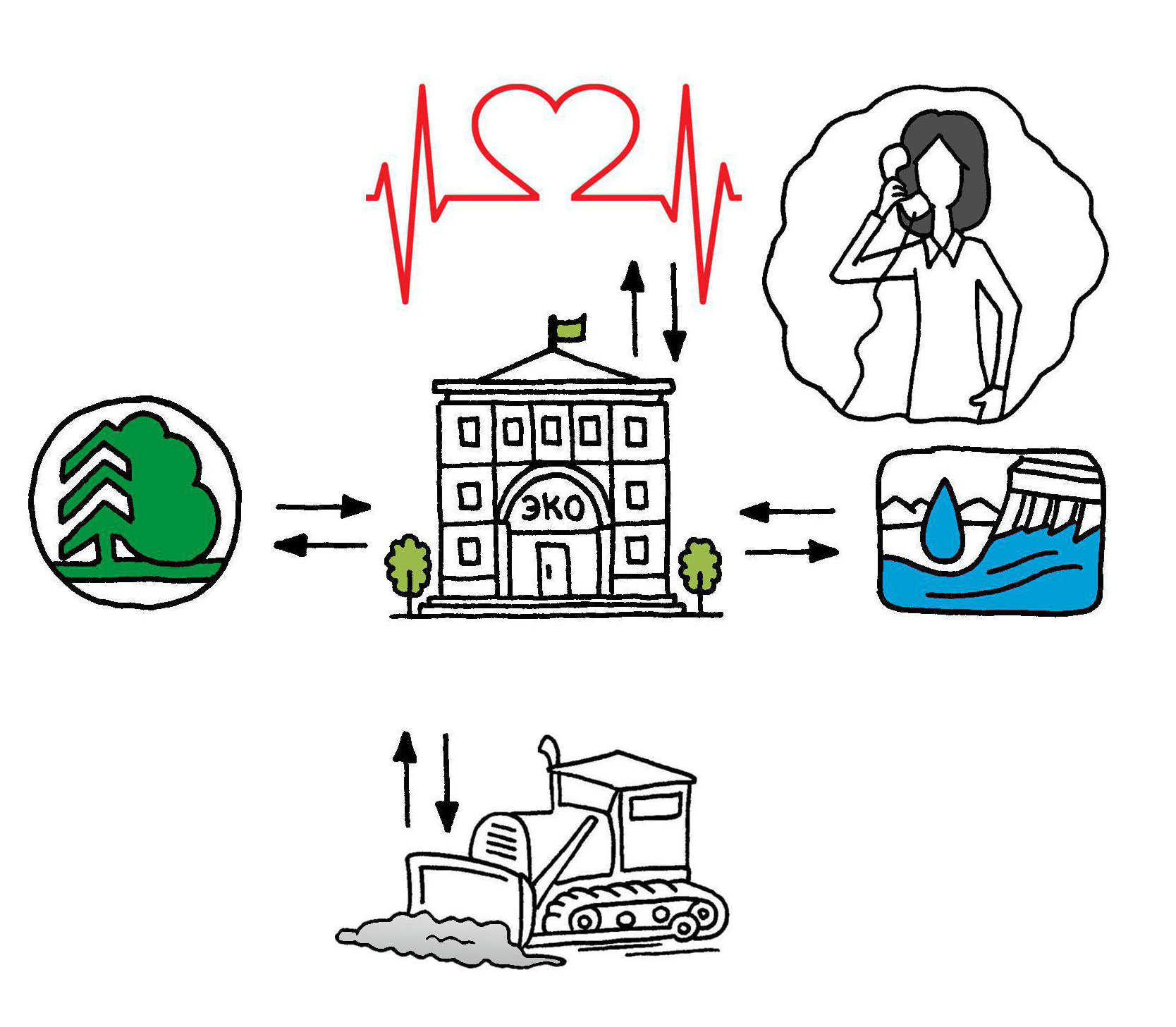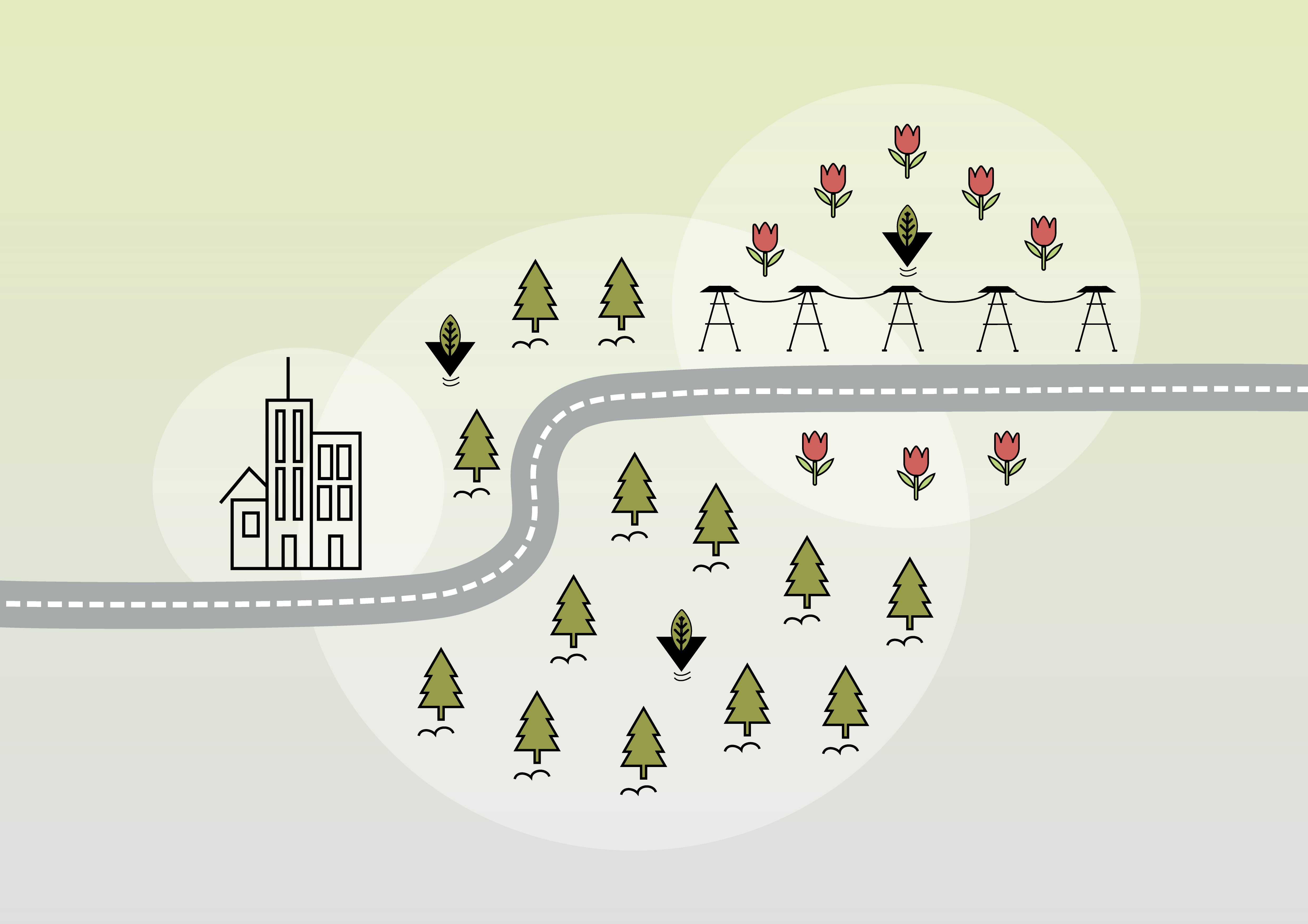





Mining industry and nature: Major challenges
Dispersion
of dust
of dust
Noise
Wood clearing and
deforestation
deforestation
Emissions
Pollution
Vibration
Mining protests
Mining industry: Environmental impacts and their effects

Explosions and vibrations





Industrial waste and waste rock
Fume emissions, polluted water
Damage to and pollution of pastures
Dust and noise from machinery
Impact of climate change and natural disasters on the safety of tailings
Mining industry and nature: Solutions

Involving companies in wildlife monitoring and conservation efforts.





Regular environmental monitoring at industrial sites.
Factoring in opinions of the locals and the proposals of public nature conservation groups.
Fencing off industrial sites and preventing the use of protected areas for mining and exploration.
Funding local efforts and projects aimed at environmental improvement and species conservation.
Nature restoration (reclamation) upon completion of industrial activities.

Mass tourism and nature: Major challenges
Habitat
disturbance
disturbance
Poaching
Forest
fires
fires
Deforestation
Waste
accumulation
accumulation
Littering
Collecting
unique
plants
unique
plants
Mass tourism: Environmental impacts and their effects

Risk of forest fires.
Cave damage.
Cave damage.



Waste buildup and pollution in areas
of mass tourism.
of mass tourism.
Poaching, reckless and unchecked hunting.
Uncontrolled gathering of unique plants.
Uncontrolled gathering of unique plants.
Excessive tourism load on natural parks and picnic areas.
Mass tourism and nature: Solutions

Prevention of tourism in strictly protected areas.





Sound planning for tourism sites, factoring in the potential impacts on rare and vulnerable species of flora and fauna.
Setting limits for the gathering of rare plants by tourists and residents.
Maintaining high environmental standards, using advanced waste collection systems, and promoting renewable energy at tourism sites.
Conducting regular environmental assessments in areas with mass tourism.
Banning the clearance of high-value forests and imposing restrictions on the development of wilderness for tourism.

Transport and energy infrastructure and nature: Major challenges
Deforestation
Barriers for
migratory species
migratory species
Technical
factors
factors
Ecosystem
fragmentation
fragmentation
Roads: Environmental impacts and their effects

The development of roads is of great social and economic significance. They facilitate access to natural resources for people and companies.



High-traffic roads and roadside fences have negative impacts on migratory species.
Road construction may affect rare and vulnerable flora and fauna species.
The construction and expansion of railways and transport corridors with little regard to the environment leads to fragmentation and shrinking of the habitats of migratory species.
More access
to pastures
to pastures
More access
to mineral
resources
to mineral
resources

Strategic environmental assessment
Nature before the development of main roads...
...and after their construction.
Planning transport corridors and main roads through mountains and other sensitive ecosystems requires a strategic environmental assessment.
Energy: Environmental impacts and their effects

Large-scale renewable energy projects may affect the environment and require an environmental impact assessment (EIA).



Pipelines, roads and fences may restrict species’ migration routes.
The development of water-and-energy infrastructure may affect unique and vulnerable species and habitats.
Industrial accidents and leaks may damage ecosystems and vulnerable species.
Transport, energy and nature: Solutions

Passages for migratory species over main roads and other infrastructure.





Passages for migratory species under main roads and other infrastructure.
Warnings for drivers and the reduction of night traffic.
Consideration of the ecological characteristics of species and their habitats when building infrastructure.
Mitigation solutions: varying dimensions, structures and designs.
Nature-based solutions and greening the transport and energy sectors.
Other factors affecting biodiversity

High domestic pressures on natural resources: intensive grazing, unsustainable walnut harvesting and forest management.



Climate change affects sensitive species, ecosystems, and biological processes, such as seasonal migration, vegetation phases, etc.
Invasive alien species constrain and replace native species: creating risks to the urban and aquatic environment.
Fencing along the border disrupts species’ migration.

Safeguards for biodiversity in the development of infrastructure
Low-carbon development,
emission reduction
emission reduction
Ecological
links
links
Environmental
safeguards and
standards in the
investment projects.
safeguards and
standards in the
investment projects.
Public consultations
Environmental impact
assessment (EIA)
assessment (EIA)
Waste management
Green spaces
Public participation

Conducting public environmental examinations and sending their results to public authorities.





Getting media coverage,
investigative journalism.
investigative journalism.
Development of regional networks for broader environmental engagement.
Filing inquiries and complaints to the company and its funding organizations.
Review of projects, plans and official
documents on the websites of competent governmental authorities and companies.
documents on the websites of competent governmental authorities and companies.
Seeking advice from reputable scientists and independent experts.
Public participation

Collection of signatures for petitions on environmental matters.





Organization of round tables on the environmental impacts of infrastructure projects.
Appeal to the governmental authorities in charge of monitoring or issuing permits for projects.
Spatial Monitoring and Reporting Tool (SMART) patrolling and public nature protection teams.
Joint environmental inspections with governmental and local authorities.
Appeal to international organizations for external assessment.
Forestry
Environment
Water
Mining,
transport
transport
Healthcare
International conventions, tools and practices

Aarhus Convention on Access to Information, Public Participation in Decision-Making and Access to Justice in Environmental Matters





Bonn Convention on the Conservation of Migratory Species of Wild Animals
Convention on International Trade in
Endangered Species of Wild Fauna and
Flora (CITES)
Endangered Species of Wild Fauna and
Flora (CITES)
Ramsar Convention on Wetlands of International Importance
Convention on Biological Diversity
International Decade on Ecosystem Restoration (2021–2030), national action plans for biodiversity conservation
Environmental
information
information
Mass media
The public
Justice
Hearings
International conventions, tools and practices

Conventions on toxic substances and waste: Minamata, Stockholm, Basel.





Prevention of industrial accidents, other standards and requirements.
Convention on Environmental Impact
Assessment (Espoo) and its basic principles.
Assessment (Espoo) and its basic principles.
Environmental standards and certificates: ISO 14000, etc.
Environmental and social governance (ESG) of companies, transparency of reporting.
Environmental standards and requirements of the major investors: Belt and Road Initiative, international development banks.

A Global Standard for the Identification of Key Biodiversity Areas (KBA) of the International Union for Conservation of Nature (IUCN)
Endangered species
1% of the global population
1% of the global population
Geographically
restricted species
and communities
restricted species
and communities
Endangered endemic
species
species
Irreplaceable
ecosystems
ecosystems
Seasonal gatherings and migration
Unique local species
100% of the global population
100% of the global population
10% of the global population
1% of the global
population
population
Main categories of protected natural areas in Central Asia

Strict nature reserves (IUCN I)
Strictly protected nature conservation sites, where no economic activity is allowed and visitation is limited, except for scientific purposes.
Strictly protected nature conservation sites, where no economic activity is allowed and visitation is limited, except for scientific purposes.





National parks (IUCN II)
Natural areas where no economic activity is allowed, but which are open for tourists and residents.
Natural areas where no economic activity is allowed, but which are open for tourists and residents.
Habitat or species management areas (IUCN IV)
Natural areas of local significance, where human activities are limited. Visits by tourists, local residents and certain types of projects are allowed.
Natural areas of local significance, where human activities are limited. Visits by tourists, local residents and certain types of projects are allowed.
Hunting reserves
Area allocated for wildlife conservation and regulated hunting. Open for tourists, local residents and infrastructure projects.
Area allocated for wildlife conservation and regulated hunting. Open for tourists, local residents and infrastructure projects.
Water protection zones
Areas where pollution and river bed development, including sand and gravel mining, are not allowed.
Areas where pollution and river bed development, including sand and gravel mining, are not allowed.
Natural monuments
Natural sites with unique properties and high historical and social significance.
Natural sites with unique properties and high historical and social significance.


